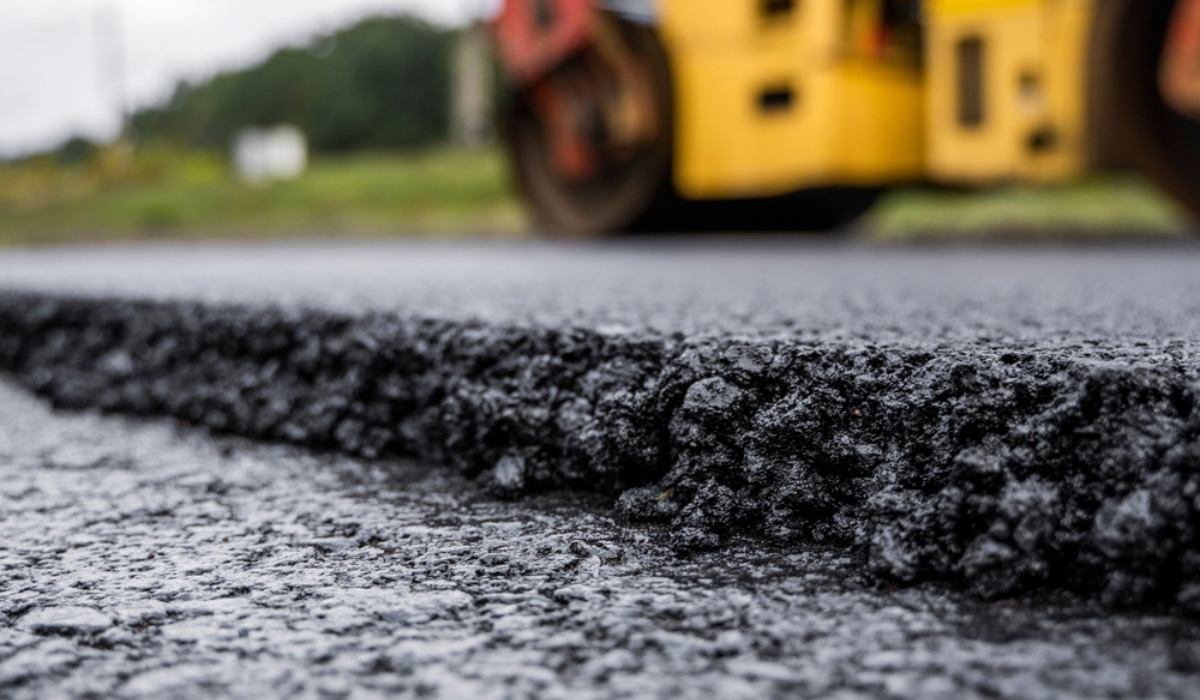Road construction is a laborious operation that might take several years to complete, depending on the length of the finalised roadway. It takes meticulous planning, many evaluations, and a variety of evaluations, including analyses of the environment and the structure, and it includes multiple construction teams and plant equipment. Once construction has started on a road, numerous steps must be completed before the road is ready for vehicle traffic.

Source: Pinterest
Road construction: What is it?
Road construction is the establishment of an engineered, unbroken right-of-way or roadbed that overcomes geographical barriers and has levels low enough to allow for car or foot traffic, and is needed to follow legal or official norms.
Modern road construction
The building of modern roads necessitates the elimination of natural barriers as well as the use of newly developed building materials that are much more resilient and long-lasting. The steps of the road-building process, in a nutshell, are:
- Explosions and digging are the two primary methods used to remove rocks and soil.
- After the construction of embankments, tunnels, and bridges, any required deforestation is performed to clear the area of vegetation.
- In the last step of the road building process, the pavement material is placed down utilising a variety of different pieces of construction equipment.
When constructing a new road, whether out of asphalt or concrete, it is necessary to produce a pavement structure that is very well-bonded, starting with a solid foundation layer and progressing all the way up to a surface course that is properly levelled.
Building better roads: Innovative construction methods

Source: Pinterest
This part of the article will walk you through each stage of the process of building a road. This procedure is for a project that will take place in the greenfield. Greenfield refers to projects that are brand new. On the other hand, projects that include expansion, rehabilitation, and rebuilding are known as brownfield projects.
Improvements to the already-established sub base
When preparing an existing surface, potholes and rust are filled up as necessary. Premix chippings are used to smooth up the bumps a week before the surface course is laid. A bituminous levelling course of sufficient thickness is supplied to build a bituminous concrete surface course on a binder course as opposed to directly on a WBM if the existing pavement is exceptionally low.
The use of the Tuck Coat
When laying an AC (asphalt concrete) layer, it is best to do so over a bituminous foundation or binder course. Bitumen is spread at a rate of 6.0–7.5 kilogramme per 10 sq.m for the tack coat; for the non-bituminous base, this rate may be raised to 7.5–10 kg.
Incorporating premix and its preparation
A hot mix facility with the necessary capacity and quality control measures is used to produce the premix. Bitumen may be heated to temperatures between 150 and 177 degrees Celsius, and the aggregate temperature should not be more than 14 degrees Celsius away from the binder temperature.
The transporters take the hot mixed material, carry it to the site, and distribute it using a mechanical paver at a temperature between 121 and 163 degrees Celsius. The layer thickness and camber are both confirmed to be correct. It is crucial to the durability of the finished pavement structure that the temperatures used for mixing and compaction be carefully regulated.
Rolling

Source: Pinterest
Rolling at a pace of no more than 5 kilometres per hour fully compacts a mix after it has been spread on the base course. An 8 to 12-ton roller is used for the preliminary or breakdown rolling, while a 15- to 30-ton, fixed-wheel pneumatic roller with a tyre pressure of 7 kilogrammes per square centimetre is used for the intermediate rolling.
The roller’s wheels are constantly sprayed with water to keep them from drying out. Depending on the layer’s thickness, a certain number of passes may be necessary. If the density isn’t high enough after the first day of rolling due to warm weather, the second day of rolling might do the trick. A tandem roller that weighs between 8 and 10 tonnes does the final rolling or finishing.
Management of bituminous concrete quality
On-site inspections are carried out, as a matter of course, to guarantee that the final pavement mixture and the pavement surface area are of a high enough standard.
Regular examinations are carried out for
- Aggregate grading
- The kind of bitumen used
- The aggregate’s current temperature
- The temperature of the asphalt mixture when it is being mixed and compacted
When a hot mix facility is finished discharging its mixture, at least one sample per hundred tonnes must be taken and analysed for the aforementioned criteria. We also do Marshall testing. There must be at least 95% agreement between the field density and the lab density for every 100 square metres of compacted surface. There is a 6mm tolerance for thickness changes for every 4.5m in length.
Completed layer
A straight edge measuring 3.0 m should be used to inspect the AC coating. There shouldn’t be more than 10 undulations above 6.0 mm and 8.0 mm in length within a stretch of 300 metres. No more than 4.0mm of undulations may be tolerated in the cross-traffic profile.
Road construction: Demand for drainage facilities
Roads need to be equipped with drainage systems to survive throughout their service lives. Water causes pavement defects. Erosion of the subgrade could occur if there is running water. As a result, a road should never be wet; more specifically, there should be no accumulation of water on or below the pavement.
A road must have an appropriate cross profile so that water can flow off of it properly. Both sides of the walkway should be equipped with drains, and the water should be transported and disposed of properly through a drain to avoid the erosion of the subgrade.
Road construction: Materials used
Soil, aggregates (both coarse and fine), bitumen, binders, and admixtures are the components that go into the building of roads. Each layer has exclusive discretion over the application of its own substance. The following are the many forms in which materials for road construction can be applied:
- As a naturally occurring or manufactured substance, the soil is used as subgrade material.
- The blend of coarse and fine aggregates constitutes the sub-base course.
- The aggregate of 0-10 mm in size, when combined with bitumen, serves as the base course and wearing course.
- As cutback bitumen, emulsion, and asphalt, bitumen is used in bitumen mixture, tack coat, and prime coat.
Road construction: The six stages involved

Source: Pinterest
To someone who is not familiar with the procedure, constructing a road may not seem to be all that difficult at first. On the other hand, there is a great deal more labour that takes place in the background than the average person may be aware of. Today, we are looking more closely at the six typical phases that are connected with the building and maintenance of roads, and we are going to explore how the method used by Global Road Technology may save substantial amounts of time and cost throughout the process:
The 6 stages involved in the “traditional” method of road construction and maintenance are:
Planning
The first stage in every project involving the building or maintenance of roads is to do thorough planning and analysis of the requirements that the project is meant to meet. Local traffic patterns, both current and future, ought to be analysed, and a cost-benefit analysis should be performed by private organisations to ensure that they will actually receive a good return on their investment in construction. This will ensure that they will actually receive good value for their investment. At this point, possible concerns on finance, the law, and the environment will be discussed so that solutions may be found in advance.
Design
The design phase is the next step in the process of a typical building and maintenance project. Surveyors will go to the location in person and make use of laser equipment to precisely determine the alignment of the road, as well as its form and its direction.
During this phase of the project, not only is consideration given to the potential impact on nearby residents but also the location, terrain, and soil properties of the area, as well as the possibility of future expansion in the immediate physical vicinity, as well as any potential water access and drainage issues that may arise.
Earthworks
The earthworks are the first phase that the vast majority of people would be able to identify as being part of a road construction and maintenance project just by looking at it. Following this stage, the pavement will be placed on top of a hard and sturdy foundation that will be the result of this phase’s efforts. The road surface will certainly break prematurely at some point if the earthworks are not carried out appropriately.
Before continuing with the project, all of the necessary components, including embankments, levelling, fill, compacting, drainage, and sewers, must be installed and inspected. The final step of the process is typically the placement of 12 inches of gravel on the bed, followed by a final series of compactions to reach the desired height.
Putting down Pavement
After the road’s surface has been built, smoothed, and levelled off to the necessary height, the surface is afterwards sealed, connected, and fortified to avoid fractures in the road in the future.
QC
Before road construction and maintenance, a project can only be regarded as genuinely accomplished when there will be one more battery of quality control tests carried out after the surface has been satisfactorily created. Another inspection will be done on the drainage, as well as on the grading levels, landscaping, and restoration, among other things. The road will be able to be opened for traffic and will be in usable condition if all of the tests turn out well.
Maintenance
Traditional road surfaces will suffer degradation over time from both traffic and environmental factors, which will need their restoration. The estimated lifespan of road construction and maintenance projects varies from nation to country, but on average, one may anticipate that the project will provide service for many decades, with significant rehabilitation work being carried out around every 10 years.
Road construction techniques: The latest advancements in paving
Based on the materials used, there are various type of pavements.
- Flexible pavements
- Semi Rigid Pavements
- Rigid Pavements
- Concrete roads
FAQs
Why is road construction important?
Roads that are not well-maintained limit mobility, greatly increase the expenses of running vehicles, increase the number of accidents and the accompanying losses to human life and property, and exacerbate the problems of social isolation, poverty, bad health, and illiteracy in rural areas.
What is considered to be the average width of a road?
A contemporary highway will typically feature two lanes in each direction that are 3.75 metres wide, in addition to an extra clearance of 0.50 metres on either side.
What kinds of materials are used in the construction of roadways?
Asphalt and concrete are the two materials that are used the most often in the process of paving roadways. The kind of material that is used will be decided based on things like the cost and the volume of traffic. Bitumen is an oil-based chemical that is used in the production of asphalt. Sand and crushed rock are brought together with the help of bitumen.
How many layers are there in road construction?
There are 4 layers in road construction. These are subgrade or roadbed, sub-base course, base Course and surface course or wearing course.
| Got any questions or point of view on our article? We would love to hear from you.Write to our Editor-in-Chief Jhumur Ghosh at [email protected] |
Housing News Desk is the news desk of leading online real estate portal, Housing.com. Housing News Desk focuses on a variety of topics such as real estate laws, taxes, current news, property trends, home loans, rentals, décor, green homes, home improvement, etc. The main objective of the news desk, is to cover the real estate sector from the perspective of providing information that is useful to the end-user.
Facebook: https://www.facebook.com/housing.com/
Twitter: https://twitter.com/Housing
Email: [email protected]












